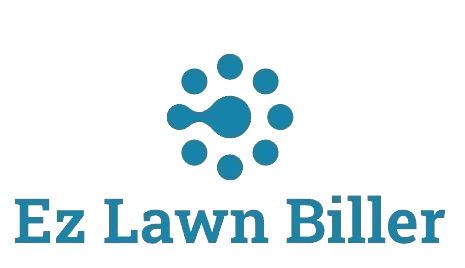Avoid These Common Follow-Up with Clients Mistakes
In this blog post, we will explore the most common mistakes made when following up with clients and provide actionable tips to enhance your communication skills.
Avoid These Common Follow-Up with Clients Mistakes
Following up with clients is a critical aspect of maintaining strong business relationships. It ensures that clients feel valued and can lead to increased loyalty and satisfaction. However, many businesses make mistakes during this process that can hinder their success. In this article, we will delve into the common pitfalls to avoid when following up with clients, providing you with strategies to improve your communication and foster better relationships.
Understanding the Importance of Follow-Ups
Before we discuss the mistakes to avoid, it’s essential to recognize why follow-ups matter. Effective follow-ups demonstrate your commitment to client satisfaction and can lead to repeat business. In fact, studies show that businesses that proactively engage with clients experience a 60% higher retention rate.
Additionally, timely follow-ups can help clarify any misunderstandings, address concerns, and even generate new opportunities. For instance, a simple check-in can turn a one-time client into a loyal customer.
1. Neglecting to Personalize Communication
One of the most significant mistakes businesses make in follow-ups is sending generic messages. Personalization is key to making clients feel valued. Addressing clients by their name and referring to their specific needs or previous interactions can create a more meaningful connection.
For instance, instead of sending a standard email about your services, mention the specific service they inquired about. This shows that you remember their needs and are genuinely interested in helping them.
Moreover, using a personalized approach not only enhances your relationship with clients but also increases the chances of a positive response. Personalized follow-ups have been shown to improve engagement rates significantly.
2. Waiting Too Long to Follow Up
Timing is crucial when it comes to follow-ups. Waiting too long can lead to missed opportunities and may leave clients feeling neglected. If a client has expressed interest in your services, aim to follow up within a reasonable timeframe, typically within 24 to 48 hours.
For example, if you have a potential client who attended a consultation, send a follow-up email the next day to thank them for their time. This not only keeps the conversation going but also reinforces your commitment to serving their needs.
On the other hand, if you wait too long, the client may lose interest or choose to engage with a competitor. Consistency in your follow-up schedule is key to maintaining their interest and establishing trust.
3. Failing to Set Clear Objectives
Every follow-up should have a purpose. Whether it’s to check on the status of a project, request feedback, or introduce a new service, having clear objectives will guide your communication. Without defined goals, follow-ups can become vague and ineffective.
For instance, if your goal is to get feedback on a recent service, frame your follow-up questions specifically around their experience. This approach encourages clients to provide actionable insights that can help you improve your services.
Setting objectives also allows you to measure the effectiveness of your follow-ups. By tracking responses and engagement, you can refine your approach over time to ensure better results.
4. Ignoring the Client’s Communication Preferences
In our digital age, clients have various preferences regarding how they like to communicate. Ignoring these preferences can lead to frustration and disengagement. Some clients might prefer emails, while others may favor phone calls or even text messages.
To avoid this mistake, take the time to ask clients about their preferred communication methods. Respecting their choices fosters goodwill and makes them more likely to respond positively to your follow-ups.
For example, if a client prefers text messages, consider sending a brief SMS rather than an email. Tailoring your approach to individual preferences can significantly enhance your follow-up effectiveness.
5. Overdoing It with Follow-Ups
While consistent follow-ups are essential, bombarding clients with too many messages can have the opposite effect. Clients may feel overwhelmed or annoyed, leading to a negative impression of your business.
It’s crucial to strike a balance. A good rule of thumb is to space out your follow-ups appropriately. For instance, if you’ve reached out once and received no response, wait a week before trying again. If there’s still no reply, consider switching your approach.
Ultimately, the goal is to keep the lines of communication open without overwhelming your clients. Respecting their time will foster a more positive relationship.
6. Not Following Up After the Sale
Many businesses focus their follow-up efforts on potential clients and neglect those who have already made a purchase. However, following up after a sale is equally crucial. It shows clients that you care about their experience and satisfaction with your products or services.
After a client makes a purchase, send a thank-you email, ask for feedback, or offer assistance with any questions they might have. This type of follow-up can lead to repeat business and referrals.
Additionally, following up after a sale can help you identify any issues that need to be addressed, allowing you to improve your offerings continuously. Clients appreciate companies that take the time to ensure their happiness post-purchase.
7. Neglecting to Use Technology
In today’s fast-paced world, leveraging technology can significantly enhance your follow-up process. Many businesses still rely on outdated methods, which can lead to inconsistencies and missed opportunities. Invest in tools such as customer relationship management (CRM) software or email automation to streamline your follow-ups.
For example, using a lawn service software like [Lawn Biller Software](https://ezlawnbiller.com/) can help you automate follow-up emails and track interactions with clients, ensuring that nothing falls through the cracks.
Utilizing technology not only saves time but also allows you to be more organized and efficient in managing client relationships.
8. Failing to Ask for Referrals
Once you’ve established a positive relationship with a client, don’t hesitate to ask for referrals. Many businesses shy away from this step, fearing it might come off as pushy. However, if you’ve provided outstanding service, clients will likely be happy to recommend you.
Incorporate referral requests into your follow-up communications. For instance, after a successful project, you might say, “If you know anyone else who might benefit from our services, we’d greatly appreciate a referral.”
Asking for referrals not only helps you grow your client base but also reinforces your confidence in the value you provide.
9. Not Tracking Your Follow-Ups
Finally, one of the most critical mistakes is failing to track your follow-up efforts. Keeping a record of your interactions with clients is essential for understanding what works and what doesn’t.
Utilize tools like spreadsheets or CRM software to document follow-up dates, responses, and outcomes. This tracking allows you to analyze patterns, refine your strategies, and optimize your approach over time.
For example, if you notice that emails sent on Wednesdays receive more responses than others, you can adjust your follow-up schedule accordingly. Tracking helps you be more strategic in your outreach efforts.
Conclusion
In conclusion, follow-ups are a vital part of nurturing client relationships, yet they can often be mishandled. By avoiding common mistakes like neglecting personalization, waiting too long, and failing to set clear objectives, you can improve your communication and ultimately enhance client satisfaction.
Remember that effective follow-ups require understanding your clients, respecting their preferences, and leveraging technology to streamline the process. Make it a habit to track your efforts and continuously refine your approach to ensure lasting relationships.
As you move forward, keep these strategies in mind and consider using tools like [Lawn Biller Software](https://ezlawnbiller.com/) to simplify your follow-up process. Your clients deserve the best, and taking these steps will help you deliver just that!




